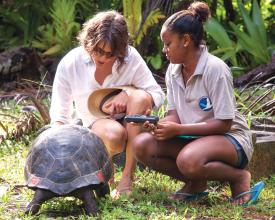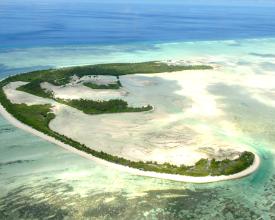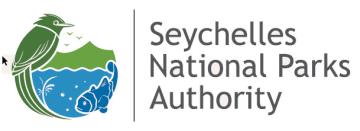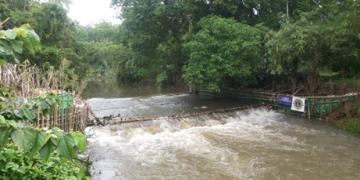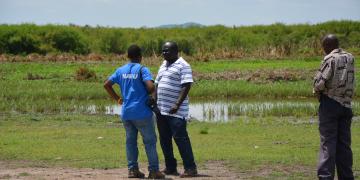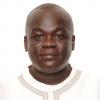Inclusive conservation governance on remote islands: Lessons from Seychelles
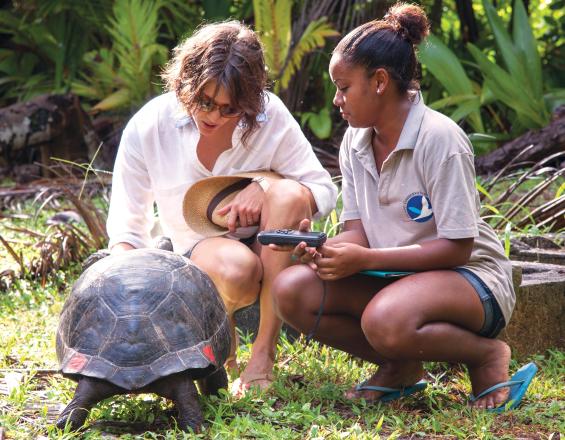
Seychelles is located in the Western Indian Ocean, between Madagascar and the Horn of Africa. It is an archipelago comprising 155 islands (as per the Constitution), spread across more than 1.4 million square kilometers of Exclusive Economic Zone (EEZ).
The Island Conservation Society (ICS), a Non-Governmental Organization in Seychelles, has been working together with its partners to develop a new financing model for managing conservation on remote island atolls. This model involves the establishment of Foundations, whose memberships comprise representation from government, parastatals / state-owned enterprises, private tourism investors operating on the islands, as well as ICS. Each Foundation ensures joint decision-making and transparency in environmental management on the islands, as well as financial self-sufficiency. Since 2006, 11 Foundations have been established for 13 island groups. Six are fully funded with active conservation programmes, and three of them have endowment funds.
Context
Challenges addressed
Remoteness: Because they are not immediately visible, remote islands, rarely visited by local citizens, can become forgotten. This places pressure on the availability of financing. Therefore, through support from the GOS-UNDP-GEF Outer Islands project, the islands have developed business plans to address this challenge. Greater emphasis is also placed on communication, so they are not forgotten, but considered in national decisions.
Matching expectations: The Foundations contains members with different perspectives on what the Foundations' objectives should achieve. As a result, compromise is required, as well as continued dialogue. As the number of actors operating on the islands is limited, due to their remoteness and small size, membership of the Foundations is often limited to few organisations (represented by individuals they nominate), which can limit the number of perspectives and new ideas.
Location
Process
Summary of the process
Each building block are mutually reinforcing. The conservation management plan guides the decision-making of the Foundation, and the Foundation affects the contribtions and performance of the Endowment Fund.
Building Blocks
Foundation establishment
The Foundation is registered as an NGO and is established with Articles of Association for the Foundation, which complies with national laws. Once established, a multi-party agreement is developed which outlines the responsibilities and contributions of each member of the Foundation. The Foundation is normally made up by a representative of the Islands Development Company (IDC) which has the lease for the island, two representatives of the Island Conservation Society (the NGO conducting the conservation activities on the island) and one seat is also reserved for the investor conducting various development projects on the island. The Foundation therefore creates an obligatory platform where all the stakeholders present on the island must meet to discuss issues of importance and agree on a way forward.
Enabling factors
A clear regulatory environment is required to ensure transparent and unambiguous establishment and management of a non-profit entity; in the case of Seychelles, it is managed by the Registrar of Associations. There are very clear guidelines set up that ensure regular audits, public disclosure of accounts and proper records about members and deliberations. These measures guarantee that the Foundations remain transparent and efficient in the way they manage conservation activities on the outer islands - assets of the people of Seychelles.
Lesson learned
It is critical for the Foundation to contain the right people and members with an active interest in conservation. Training of the members on important conservation issues and delivery of quality technical reports is required to support the decision-making process of the Foundation.
Endowment Fund
The Endowment Fund is established to enable members of the Foundation to contribute financially to conservation management on the island. It also allows for capital to be invested in order to generate an income in perpetuity. The surplus at the end of the financial year is usually transferred into the endowment fund which is managed by an international investment firm. The return on investment is either put back in the endowment or used to support priority environmental projects on the island.
Enabling factors
A governing constitution for the establishment of the Fund, operational guidelines stipulating the rules and procedures managing the fund and use of the proceeds, as well as sufficient contributions to generate an income from the endowment.
Lesson learned
Supporting under-resourced islands: Some islands have active Foundations where the financial contributions cover the conservation management more than sufficiently. However, other Foundations with less economic activities, or with extremely sensitive habitats, receive fewer resources. Therefore, promoting cross-subsidisation between Foundations would support less resourced islands with equally importance ecosystems, as well as helping to support islands struck by natural disasters, e.g. cyclones.
Conservation management plan
The conservation management plan guides the implementation for how the income raised is put to best use. The plan, approved by the Foundation, provides costed annual work plans to guide the Foundation members and the ICS implementing team, and details the required annual reports on the outcomes of the existing activities.
Enabling factors
Competent and respected NGOs to undertake the development of the management plan, implementation of and reporting on its activities.
Lesson learned
Clear decision-making: In order for the conservation management on the islands to be effective, each Foundation meeting needs to conclude with clear actionable decisions. Ambiguity of decisions can lead to uncertainty on how to proceed in the intervening period, especially by field conservation staff. Incorporating a secretariat to manage the operations of the Foundations (in our case managed by ICS) would ensure that high-level decisions are translatable to activity-based implementation.
Impacts
The Foundations have already delivered a series of impacts for the conservation on the islands which they support, namely:
- Transparency and equity: The membership of the Foundations consist of private investors on the islands, government (Ministry of Environment, parastatals such as Islands Development Company and Seychelles National Park Authority) and NGOs. There is joint ownership and equal voting rights on decisions within the Foundations. Each is governed by a Constitution and Agreement between stakeholders on the islands.
- Financing conservation: The Foundations are responsible for the sustainable financing of the conservation efforts on the islands. These consist of direct contributions from the tourism investors on the islands, as either a fixed fee per guest, or proportion of turnover. In addition, Corporate Social Responsibility Payments (CSR) are channeled from tourism investors to the Foundation for conservation activities and to build a permanent endowment fund. IDC provides accommodation, transport, logistical support and CSR.
- Governance: The Foundation oversees implementation of the conservation management plan on the island within its sphere of responsibility.
Beneficiaries
Developers and private operators on islands benefit from improved national conservation assets on the islands and learn more about conservation.
Seychellois citizens benefit from knowing the islands better, and their heritage being protected.
Sustainable Development Goals
Story
The Alphonse Foundation was created in 2007. The Founding trustees were from the Islands Development Company, Island Conservation Society, investors operating on the island at the time and the Ministry of Environment of Seychelles. The Alphonse Foundation was amongst the initial foundations set up to support environmental conservation efforts on the outer islands of Seychelles. Over the years, it has played a pivotal role in balancing the conservation and rehabilitation activities for the islands of the Alphonse and St Francois Atolls with sustainable low-impact ecotourism development.
Alphonse island is known nowadays as an important global destination for fly-fishing for the Giant Trevally and other target species. There is currently one operator on the island that conducts fly- fishing activities off the reef with international tourists.
However, the Alphonse Foundation wanted to know the impacts of the fishing operations on the environment, in order to ensure that the allowable activities would not have a long-term negative impact on the sensitive ecosystem. Therefore, in partnership with the operators, an innovative research programme to track the Giant Trevally movements around the atoll is being conducted in order to understand the correct management actions, such as whether and when to open and close different areas.
This project is being financially supported by a grant from the Seychelles Conservation and Climate Adaptation Trust (SeyCCAT), the Alphonse Foundation and its members, the University of Massachusetts Amherst, as well as other international partners.
The objective of the private operator is to use science to inform its business operations. The fishing guides working for the fly-fishing operator are assisting to tag fish as well as informing guests of the project and the importance of its results.
Little is known about the impact of fly-fishing on ecosystems and this will provide lessons and the model can be replicated on other islands.

